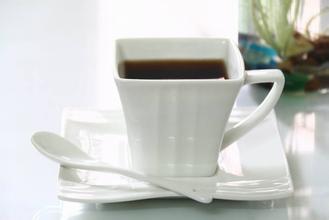Coffee bean wet planing treatment-honey treatment coffee bean sun washing
Coffee bean wet planing treatment-honey treatment coffee bean sun washing
We eat its flesh; we enjoy coffee, but we roast its seeds, grind them and drink them, while the rest of the peel and flesh are abandoned. Coupled with the fact that coffee seeds look like beans, people naturally call them coffee beans. In later descriptions, for simplicity and ease of understanding, we still use the title of coffee beans, but we need to know that coffee beans are not ripe red fruits that are now peeled in a peeling machine. Unlike the water washing method, the wet planing method uses smaller peeling machines, which are so small that almost every coffee farmer can have one, so the "peeling" stage is almost completed at the farm level.
Washing is the most technical way to pick up beans, and the quality of coffee is ensured through multiple sieving procedures. First move the red fruit and half-green and half-red fruit that have sunk into the sink into a large or medium-sized pulp screening machine (PulpingMachines). It is cleverly designed to mechanically press the fruit into a sieve hole, which is exactly the size of the pod (both sheepskin-wrapped coffee beans) to filter out the flesh outside the pod-using unripe fruit to be harder. Pods are not easy to squeeze out, but mature fruits are soft, and pods are easily squeezed out to ward off unripe beans and filter out the sweetest pods, so the setting of machine thrust is very important. too much force will squeeze out hard and astringent unripe beans, damaging the quality of fine beans. The general push force is set to allow 3% of red fruit pods to be squeezed into the sieve hole to ensure that all stiff green fruits are removed.
After taking out the sticky pods of the red fruit, move them into a large sink, followed by the most important washing and fermentation to remove pectin shavings from the pods. This sticky material is not easy to wash away with water, so it is necessary to hydrolyze the pectin with all kinds of bacteria in the tank, decompose the pectin and wash the pods in the tank to accelerate the pectin to break away from the pods. The fermentation process takes about 16 to 36 hours, depending on temperature and humidity, when malic acid is naturally produced in the tank. Citric acid. Acetic acid. Lactic acid and propionic acid. Interestingly, the raw bean itself contains almost no acetic acid, but the fermentation process of washing treatment can increase the acetic acid concentration of the bean, which is beneficial to the flavor of coffee. Not only can these acids inhibit mold parasitism, some acid elves will also be mixed into beans (which is why washed beans taste so sour), but samples must be taken at any time to see if the sticky pectin on the pods is clean, and then decide whether to stop fermentation and take out clean pods. Once 36Murray is more than 72 hours, it may be over-fermented, producing too much fatty acid and butynic acid and giving off a stench, and beans mixed with too much acid will make the coffee too sour and Chongqing is a bad bean.

Important Notice :
前街咖啡 FrontStreet Coffee has moved to new addredd:
FrontStreet Coffee Address: 315,Donghua East Road,GuangZhou
Tel:020 38364473
- Prev

Coffee pull gesture skills to make coffee flower drawing picture basic gesture
Coffee pull gesture skills to make coffee pull flower picture basic gesture one, the main process of coffee pull heart. 1. Make a cup of espresso. 2. Dispense the milk foam, go up and down the milk tank, extinguish the atmosphere in the milk foam, shake the milk tank horizontally, let the milk foam form a whirlpool, so that the milk and milk are not fully integrated. 3. After the light espresso, pour the milk and foam from the milk jar into the coffee
- Next

Know two temperatures. One is the starting and ending temperature of foaming, and the other is the temperature at which the milk foam is made.
Know two temperatures. One is the starting and ending temperature of foaming, and the other is the temperature at which the milk foam is made. Every time I communicate with my friends on this subject, I only get some very general results. For example: be delicate (what is delicacy? No one can explain it in precise words), like velvet (what is velvet? As an animal protected by the state, several people dare to fight for a day.
Related
- What is the meaning of lactic acid fermentation with coffee bean treatment?
- How to judge the state of foam by sound?
- How does the latte pull out the unicorn pattern? Come to get for a little trick to improve the flower pull!
- Will flower pulling affect the taste of the latte?
- Do you know the history of coffee?
- The difference between honey treatment and sun washing what is raisin honey treatment?
- What kind of milk can a novice use to make coffee foam to keep the foam longer? The correct method and skills of milking tutorial sharing
- Why do washed coffee beans taste sour? Flavor characteristics of washed Coffee
- Introduction to the skill of how to practice the size and height of water injection around the circle of hand-brewed coffee
- How do beginners practice coffee flower drawing from scratch?

